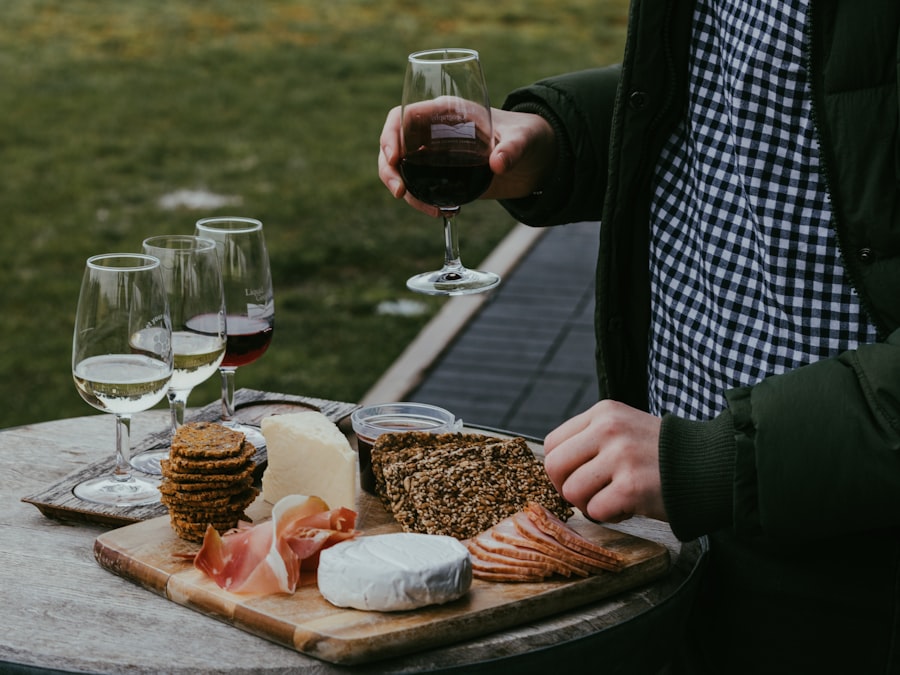Embarking on a journey through local cuisine is akin to stepping into a vibrant tapestry woven with the threads of culture, history, and tradition. Each dish tells a story, reflecting the unique ingredients and cooking methods that have been passed down through generations. For instance, in the southern United States, the rich flavors of gumbo and jambalaya showcase the influence of Creole and Cajun cultures, where spices and fresh seafood come together in a harmonious blend.
Similarly, in Italy, regional specialties like risotto in Lombardy or arancini in Sicily highlight the diversity of ingredients and techniques that vary from one locale to another. Exploring local cuisine also offers an opportunity to connect with the community. Visiting farmers’ markets or local eateries allows travelers to engage with chefs and artisans who are passionate about their craft.
In places like Oaxaca, Mexico, the art of mole preparation is not just a culinary endeavor but a cultural ritual, often involving family gatherings where recipes are shared and perfected. This hands-on experience fosters a deeper appreciation for the food and the people behind it, transforming a simple meal into a memorable adventure.
Key Takeaways
- Exploring Local Cuisine: A Culinary Adventure
- Embrace the local flavors and ingredients to truly experience the culture of a place through its food.
- The Art of Food Pairing: A Delightful Culinary Experience
- Pairing food and drinks can elevate the dining experience, bringing out the best in both.
- Indulging in Sweet Treats: Desserts and Pastries
- Desserts and pastries offer a delightful way to end a meal, with a wide variety of flavors and textures to explore.
- Savoring Exotic Flavors: A Journey through International Cuisine
- International cuisine offers a diverse range of flavors and cooking techniques, providing a culinary adventure for the taste buds.
- The Craft of Mixology: A Taste of Innovative Cocktails
- Mixology is an art form that combines flavors and techniques to create innovative and delicious cocktails.
The Art of Food Pairing: A Delightful Culinary Experience
Food pairing is an intricate dance of flavors, textures, and aromas that can elevate a meal from ordinary to extraordinary. The science behind food pairing often involves understanding how different ingredients interact on a sensory level. For example, the combination of sweet and savory can create a delightful contrast that tantalizes the palate.
A classic illustration of this is the pairing of prosciutto with melon; the saltiness of the cured meat beautifully complements the sweetness of the fruit, resulting in a refreshing appetizer that is both simple and sophisticated. Moreover, the art of food pairing extends beyond just individual ingredients; it encompasses entire meals and beverages as well. Wine pairing is a prime example where the right wine can enhance the flavors of a dish while also providing a new dimension to the dining experience.
A robust Cabernet Sauvignon can stand up to a hearty steak, while a crisp Sauvignon Blanc might be the perfect match for a light seafood dish. Understanding these nuances allows chefs and home cooks alike to create harmonious dining experiences that leave a lasting impression.
Indulging in Sweet Treats: Desserts and Pastries

Desserts and pastries are often considered the crowning glory of any meal, offering a sweet finale that delights the senses. The world of sweets is vast and varied, with each culture contributing its own unique creations. In France, for instance, patisseries are renowned for their exquisite pastries such as éclairs, macarons, and tarts.
The meticulous craftsmanship involved in creating these treats is evident in their delicate textures and intricate designs, making them not only delicious but also visually stunning. In contrast, many cultures have their own traditional desserts that reflect local ingredients and customs. In India, for example, sweets like gulab jamun and jalebi are integral to celebrations and festivals.
These confections often incorporate spices such as cardamom and saffron, adding layers of flavor that are both comforting and exotic. The act of indulging in these sweet treats transcends mere consumption; it becomes an experience steeped in tradition and shared joy.
Savoring Exotic Flavors: A Journey through International Cuisine
| Cuisine Type | Number of Dishes | Popular Ingredients |
|---|---|---|
| Italian | 25 | Tomatoes, Olive Oil, Basil |
| Indian | 30 | Curry, Garam Masala, Turmeric |
| Japanese | 20 | Soy Sauce, Rice, Seaweed |
| Mexican | 35 | Avocado, Cilantro, Lime |
Traveling through international cuisine is like embarking on a global expedition without ever leaving your seat. Each dish offers a glimpse into the culinary practices of different cultures, showcasing unique ingredients and cooking techniques that define their gastronomic identity. For instance, Thai cuisine is celebrated for its bold flavors, where sweet, sour, salty, and spicy elements coexist in perfect harmony.
Dishes like pad Thai or green curry exemplify this balance, inviting diners to explore a symphony of tastes with every bite. Similarly, Middle Eastern cuisine presents an array of exotic flavors that captivate the senses. The use of spices such as cumin, coriander, and sumac creates dishes that are rich in flavor and history.
A traditional mezze platter featuring hummus, baba ghanoush, and tabbouleh not only offers a variety of tastes but also encourages communal dining—a practice deeply rooted in Middle Eastern culture. This journey through international cuisine not only satisfies hunger but also fosters an appreciation for global diversity.
The Craft of Mixology: A Taste of Innovative Cocktails
Mixology has evolved into an art form that combines creativity with precision, resulting in innovative cocktails that tantalize the taste buds. Skilled mixologists experiment with flavors, textures, and presentation to craft drinks that are as visually appealing as they are delicious. For example, the use of fresh herbs like basil or mint can add an aromatic element to cocktails such as mojitos or gin fizzes, enhancing the overall drinking experience.
Furthermore, the resurgence of craft cocktails has led to a renewed interest in classic recipes as well as the creation of new concoctions that push the boundaries of traditional mixology. Ingredients like house-made syrups or artisanal bitters allow bartenders to infuse their drinks with unique flavors that reflect seasonal produce or local influences. The result is a cocktail culture that celebrates innovation while honoring time-honored techniques.
Exploring the World of Wine: A Culinary Adventure for Wine Enthusiasts

Wine is often regarded as one of the most sophisticated accompaniments to food, with its ability to enhance flavors and elevate dining experiences. The world of wine is vast, encompassing various regions, grape varieties, and production methods that contribute to its complexity. For instance, wines from Bordeaux are known for their rich tannins and deep flavors due to the region’s unique terroir, while wines from Napa Valley often showcase fruit-forward profiles that appeal to modern palates.
Wine tasting is not merely about sipping; it involves engaging all the senses to appreciate the nuances of each varietal. The visual examination of color, the swirling to release aromas, and the careful tasting to discern flavors all contribute to a deeper understanding of wine. Pairing wine with food further enhances this experience; for example, a buttery Chardonnay can complement a creamy pasta dish beautifully, while a zesty Riesling might be perfect alongside spicy Asian cuisine.
This exploration invites enthusiasts to embark on a journey through vineyards and wineries, discovering the stories behind each bottle.
The Joy of Cooking: Hands-On Culinary Experiences
Cooking is often described as both an art and a science—a creative outlet that allows individuals to express themselves while also engaging in practical skills. Hands-on culinary experiences provide an opportunity for people to immerse themselves in the cooking process, whether through cooking classes or workshops led by experienced chefs. These experiences not only teach essential techniques but also foster confidence in the kitchen.
For instance, participating in a pasta-making class can transform one’s understanding of Italian cuisine. Learning how to knead dough by hand and shape it into various forms opens up new possibilities for home cooks eager to recreate authentic dishes. Similarly, baking workshops can demystify the process of creating delicate pastries or artisan bread, empowering individuals to experiment with flavors and techniques at home.
The joy derived from cooking extends beyond simply preparing food; it encompasses creativity, exploration, and connection with others.
Embracing Farm-to-Table Dining: A Culinary Adventure in Sustainability
The farm-to-table movement has gained significant traction in recent years as diners increasingly seek out sustainable dining options that prioritize local ingredients and ethical practices. This approach not only supports local farmers but also ensures that meals are fresh and flavorful. Restaurants embracing this philosophy often change their menus seasonally based on what is available from nearby farms, allowing chefs to create dishes that reflect the bounty of their region.
Dining at farm-to-table establishments offers an intimate connection between diners and their food sources. For example, many restaurants host events where patrons can meet local farmers or participate in farm tours to see where their ingredients come from firsthand. This transparency fosters an appreciation for sustainable practices while also encouraging consumers to make informed choices about their food.
The experience becomes more than just a meal; it transforms into a celebration of community and environmental stewardship.
The Pleasure of Food Festivals: A Celebration of Culinary Delights
Food festivals serve as vibrant celebrations that bring together diverse culinary traditions under one roof. These events offer attendees an opportunity to sample an array of dishes from various cultures while also engaging with chefs and food artisans who share their passion for cooking. From street fairs featuring local vendors to large-scale festivals showcasing international cuisines, these gatherings create an atmosphere filled with excitement and discovery.
For instance, events like the New Orleans Jazz & Heritage Festival not only highlight music but also celebrate the city’s rich culinary heritage through food stalls offering gumbo, po’boys, and beignets. Similarly, festivals dedicated to specific ingredients—such as garlic or chili peppers—allow chefs to showcase their creativity while educating attendees about these essential components of their dishes. The communal aspect of food festivals fosters connections among attendees as they share their culinary experiences and discover new flavors together.
Exploring Street Food: A Culinary Adventure on the Go
Street food represents one of the most authentic expressions of local culture and cuisine around the world. Often prepared by vendors who have honed their craft over years or even generations, street food offers an accessible way for people to experience traditional dishes without the formality of sit-down dining. From bustling night markets in Bangkok serving pad Thai from sizzling woks to taco stands in Mexico City offering al pastor tacos cooked on vertical spits, street food encapsulates the essence of culinary exploration.
The appeal of street food lies not only in its affordability but also in its ability to bring people together over shared meals. Many street vendors create dishes using family recipes passed down through generations, infusing each bite with history and tradition. Additionally, street food often reflects regional ingredients and flavors; for example, poutine in Quebec showcases local cheese curds paired with fries and gravy—a dish deeply rooted in Canadian culture.
Exploring street food allows travelers to immerse themselves in local life while savoring authentic flavors.
The Art of Food Presentation: A Feast for the Senses
Food presentation is an essential aspect of culinary arts that elevates dining experiences beyond mere sustenance. The visual appeal of a dish can significantly influence perceptions of taste; beautifully plated meals invite diners to engage with their food on multiple levels. Chefs often employ techniques such as layering ingredients or using vibrant garnishes to create visually stunning presentations that reflect their culinary philosophy.
For example, fine dining establishments often showcase intricate plating techniques where each component is thoughtfully arranged on the plate—think delicate microgreens atop seared scallops or vibrant sauces artfully drizzled around carefully constructed towers of ingredients. This attention to detail transforms each dish into a work of art that captivates diners before they even take their first bite. Moreover, food presentation extends beyond aesthetics; it encompasses textures and colors that engage all senses—creating an immersive dining experience that lingers long after the meal is over.
In conclusion, exploring local cuisine offers a rich tapestry woven from culture and tradition; mastering food pairing enhances culinary experiences; indulging in desserts provides sweet satisfaction; savoring international flavors broadens horizons; innovative cocktails showcase mixology’s artistry; wine exploration delights enthusiasts; hands-on cooking fosters joy; farm-to-table dining champions sustainability; food festivals celebrate diversity; street food captures authenticity; and artful presentation elevates meals into sensory feasts—all contributing to our collective appreciation for culinary adventures around the globe.



